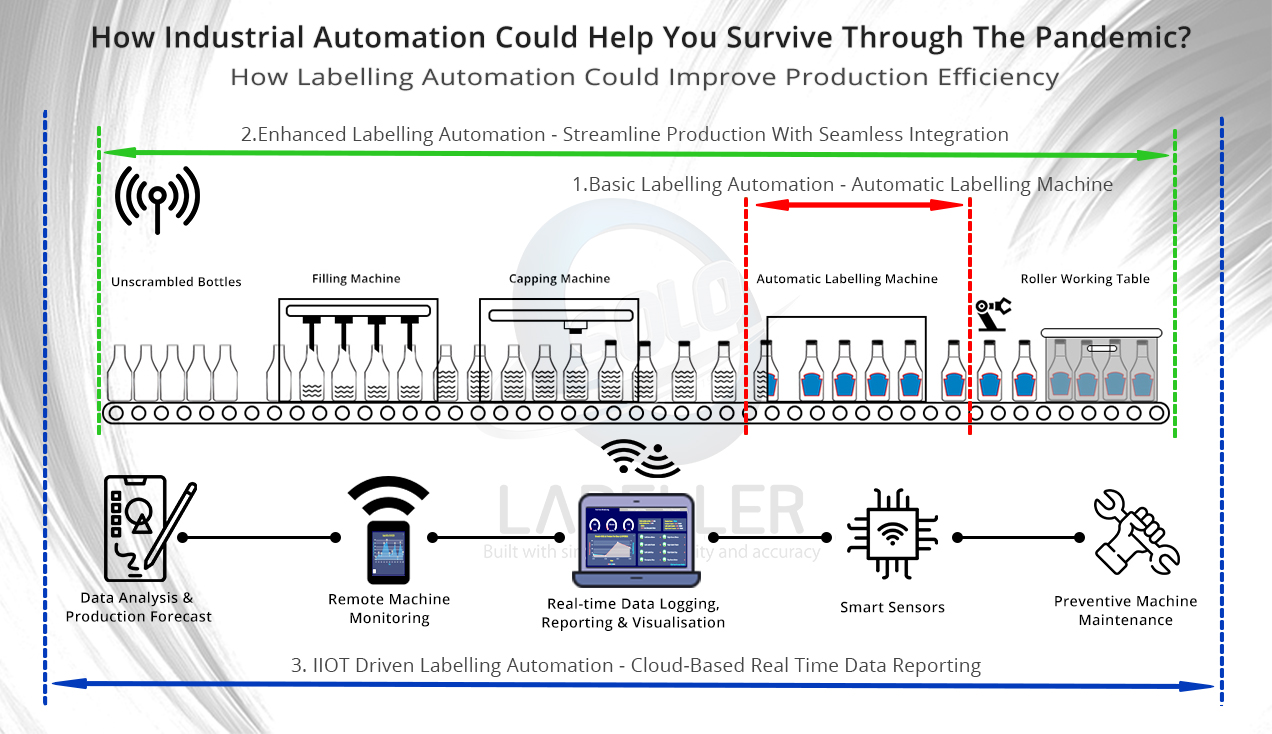
By industrial automation, it means to use automatic equipment in a manufacturing plant or facility for the advantages of a leaner operation process that focused on optimization with minimal human intervention that require lesser energy and materials. Most importantly, it is to reduce labor cost & waste with greater productivity. The need for such automation is even vital in the time of pandemic as labor shortage and supply chain disruption are accelerating the speed for manufacturing sector to go digital.
Despite its essential role in packaging, product labelling is one of the most tedious and time-consuming processes in the manufacturing plant. As a business’s labelling demand increases, the investment made on automation could bring a huge impact on production efficiency by streamlining production flows. This includes 1. resources optimization that allows labors to be freed up for more productive tasks; 2. consistent label placement that comes with precise machine configuration; 3. reduced label errors and essentially, 4. the increased of labelling capacity to cope with increasing demand.
However, it is not necessary for businesses to move from completely manual labelling to 100% automation all in one go as the concerns such as infrastructure readiness and requirement on skilled workers are involved. There are different automation stages for businesses to gradually introduce the automation system into the labelling process based on production needs.
The manual labelling process can be upgraded to the basic automation simply by replacing the hand application process with a stand-alone automatic labelling machine. This will be the foremost fundamental to achieve the full labelling automation in the long run. By introducing the basic labelling automation, instead of a group of labors doing manual labelling works, basically, now you will only require 2 operators to work with the labelling machine: 1 to place in the products on conveyor for labelling purpose and 1 to remove the product from conveyor after products are labelled.
To move from basic to enhanced automation, the focus will be shifted from improving solely on product labelling to the entire production line with seamless machine integration to speed up efficiencies. A successful integration for labelling machine into production line would require consideration of a thorough production flow process and the conveyor heights for machines involved such as filling machine or capping machine to streamline production flow.
What is better than having seamless machine integration? It is to have the entire production line sits in your palm. With the integration of Industrial Internet of Things (IIOT), it allows greater operational efficiency by being able to provide real-time data logging, reporting and visualization. The artificial intelligence feature in the machine such as smart sensor is able to capture live data and provide accurate information on machine status and configuration and will alarm the operators and managers when there is any machine abnormality. Work progression and activities carried out can be traced and tracked remotely via software and mobile applications. The greatest loss in manufacturing- downtimes are minimized effectively with the adoption of IIoT in labelling machine by eliminating the risk of unplanned machine breakdown with preventive maintenance.
 China
China